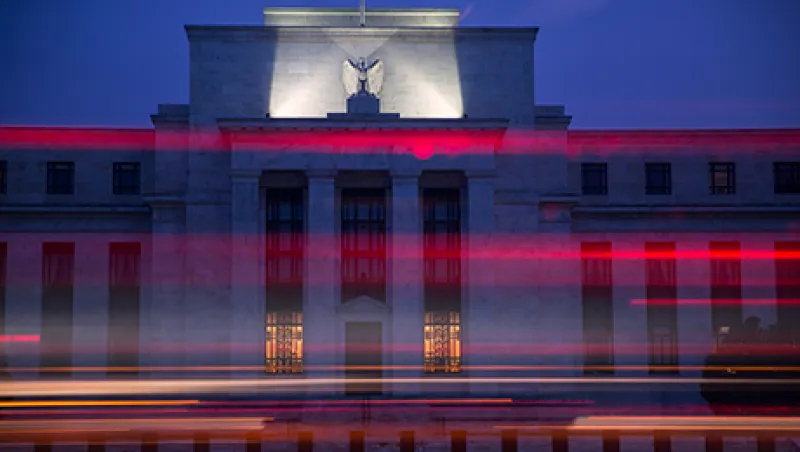Despite the recent volatility on global stock markets, it now looks as if Federal Reserve officials will stick with their plan to begin raising interest rates this year. And the Fed is expected to continue increasing rates through next year — and maybe into 2017 as well.
So what’s an investor to do? Some commentators have warned that Fed rate hikes will sound a death knell for both the bond and the stock markets; however, analysts at wealth management firms say that’s not the case.
“This is the most widely anticipated hike in my [30-year] career,” says Katherine Nixon, chief investment officer for Northern Trust’s wealth management business in New York. The Fed has communicated very clearly that it intends to raise rates and to do so in a very slow and shallow manner, she and others say. “It’s also very clear they’re going from ultra-accommodative to extremely accommodative, as Fed vice chair Stanley Fischer put it,” Nixon says. That should calm investors, analysts agree.
In the bond market, say analysts, Fed tightening will affect mostly the front, or short, end of the yield curve and, given the gradual pace the central bank will likely take, not by a huge amount. The long end of the curve is dictated more by inflation expectations — and those remain low. In the stock market Fed rate hikes historically have correlated with rising prices. And while valuations remain lofty even after the recent market blowout, fundamentals are still solid.
As for the yield curve, “the Fed raising rates doesn’t mean all yields will rise uniformly,” says Collin Martin, director of fixed-income strategy for Charles Schwab in New York. “Low inflation will continue to keep long-term yields down.” So will foreign demand, as investors opt for the higher yields of U.S. bonds compared with those in Japan and developed Europe, he says: “I don’t think you need to avoid long-term bonds altogether. If you’re overweight long-term bonds, there’s an opportunity to take some profits and move into short-term bonds, where you can take advantage of higher rates more quickly.”
Investors who own bond funds, of course, may face capital losses as a result of Fed tightening that won’t necessarily ever be recouped. Investors who directly own bonds can generally count on receiving par value when bonds mature. But fund holders will benefit from reinvesting proceeds from maturing bonds into new bonds with higher yields, says Roger Aliaga-Díaz, senior economist in Vanguard’s Investment Strategy Group in Valley Forge, Pennsylvania. “For long-term investors, those higher yields will eventually more than offset the initial capital losses due to a rate hike.”
Moving out of bonds and into cash to avoid pain after the Fed lifts rates doesn’t make sense, Aliaga-Díaz says. “Remember the reason you hold bonds. It isn’t just returns; it’s also to reduce volatility,” he points out. “The main logic for holding fixed-income — risk control — still holds in a rising-rate environment.”
Alternative fixed-income investments such as real estate investment trusts and master limited partnerships should be able to withstand Fed rate increases, Northern Trust’s Nixon says. “You have interest rate and equity exposure in those asset classes, so you can be whiplashed by uncertainty and the first increase,” she says. But bond yields will stay low as the Fed moves slowly, so REITs and MLPs will maintain their yield advantage.
Analysts don’t expect Fed rate hikes to do much damage to stocks. “[Investors] have pretty much accepted that it’s coming,” says Lee Ferridge, head of macro strategy, North America, for State Street Corp. in Boston. That’s why stocks hadn’t risen much this year even before the August swoon, he says.
In 12 of the past 14 periods that saw sustained Fed rate hikes, going back to 1958, the Standard & Poor’s 500 index generated positive returns. “Historically, when the Fed is raising rates because of a stronger economy, that’s not bad for stocks,” says Aliaga-Díaz. He sees annualized gross domestic product growth of 2.5 to 3 percent for the second half of this year and first half of next year. “While increased volatility in the stock market is to be expected in anticipation of a Fed liftoff, we encourage investors to look beyond this immediate horizon.”
Stocks’ elevated valuations will likely prevent equities from rising substantially, analysts agree. The Shiller CAPE (cyclically adjusted price-earnings) ratio for the S&P 500, which accounts for ten years of earnings, stands at 24.9, compared with an average of 16.6 since 1881. According to analysts, the fundamental environment for stocks is supportive, though. “We think earnings will stay positive, so it can still be a decent market for equities despite the increase in interest rates,” Nixon says.
Overall, then, as the Fed moves, investors may not have to. “If you have your strategic asset allocation in place, you don’t need to change it,” Nixon says.
Get more on fixed income and registered investment advisers.







